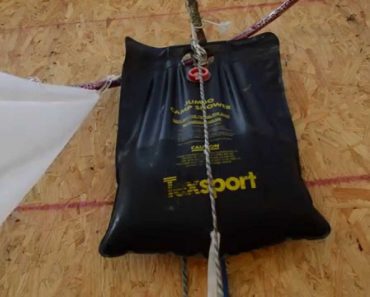As a child I used to read about solar stills made by digging a hole in the desert and covering it with clear plastic, I was an adult by the time I actually visited a desert environment, but I was very disappointed with the results. However, by placing a plastic bag over the leaves […]
Category: Outdoor Life
Camping: Hula Hoop Camping Shower
Being out on the land camping while I clear the land has its benefits. I can save travel time and I get to see my land at all times of the day. However it also has a drawback. Namely working hard and being outdoors makes showers a luxury. I am NOT used to having a […]
How to Make a Homemade Cable Snare
My friend William Smith, who used to trap in Alaska and now builds very inexpensive, but quality snares. He agreed to show me how he builds homemade cable snares. The Parts are Pretty simple 3/32 aircraft cable Sure-lock snare lock Double ferrule Single ferrule. To Build a Homemade Cable Snare: First, you run the […]
How to Setup a Camping Tarp in the Woods
I needed a semi-permanent shelter out on the land as James and I went about clearing the trash from the land. I did not want to spend any money. Additionally, I did not want to take a lot of time messing around as time on the property is limited. Since Tarps are cheap and […]
Camping: Map Contour Lines II
Being able to read contour lines is pretty important. This is the second in a series of land navigation posts. Like the first article this one also deals with map contour lines. The method I use to show contour lines is one I learned in the Boy Scouts and it is how I finally grasped […]





